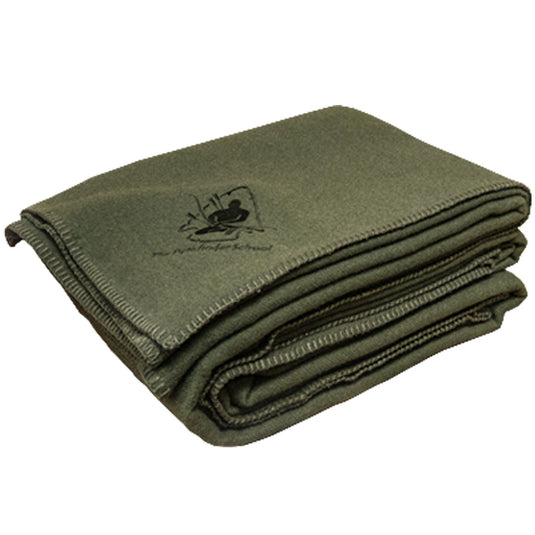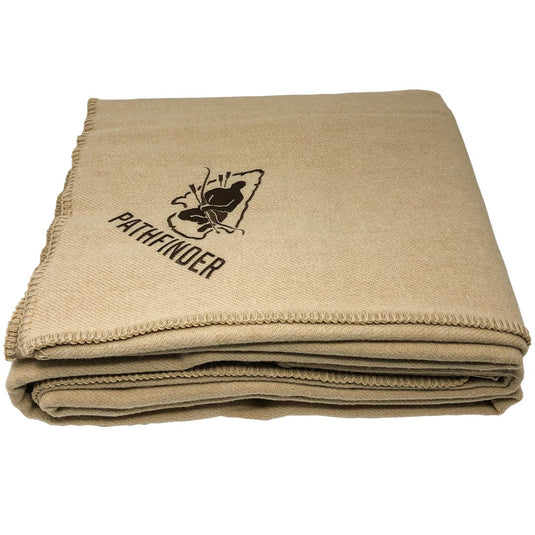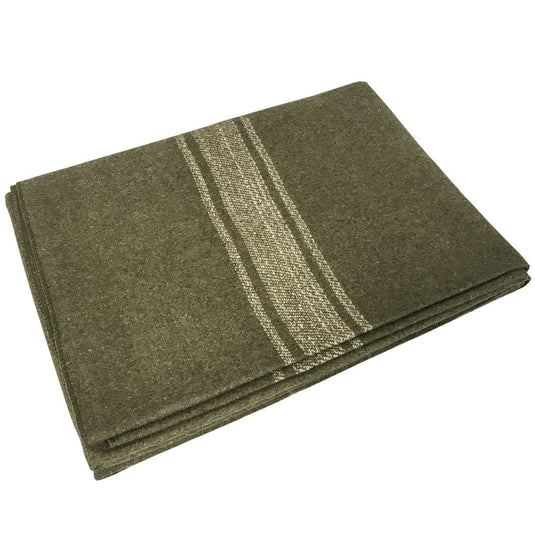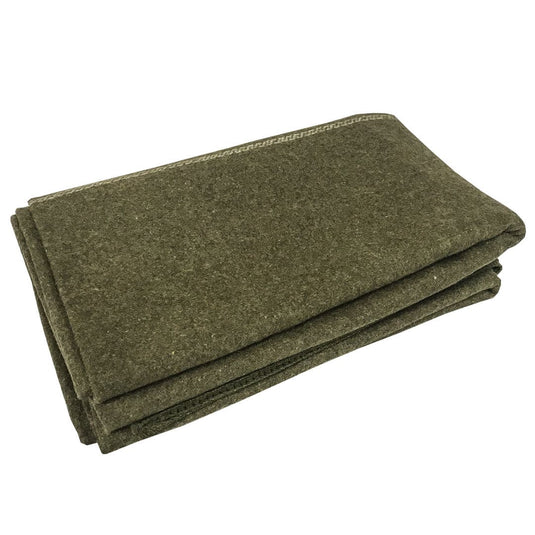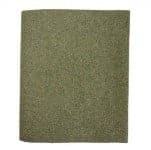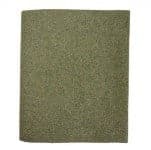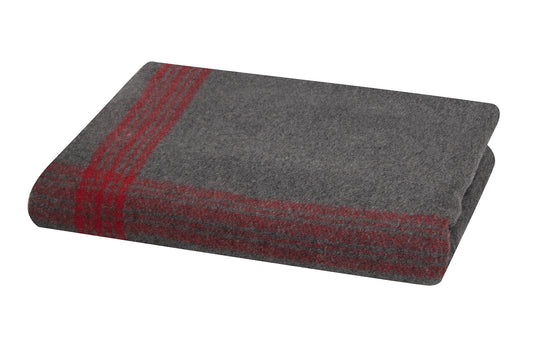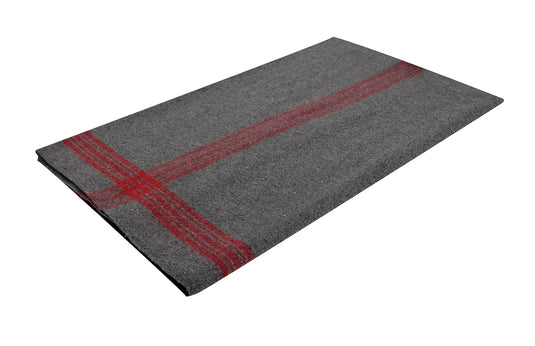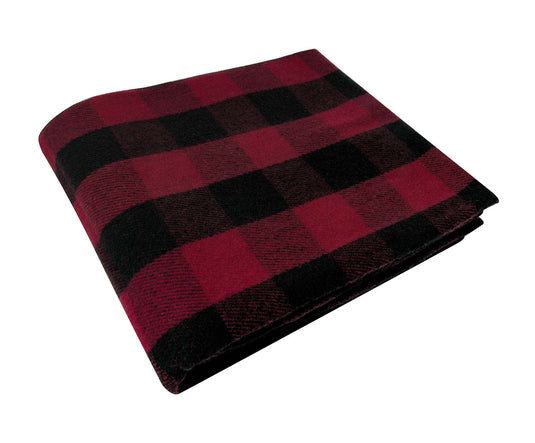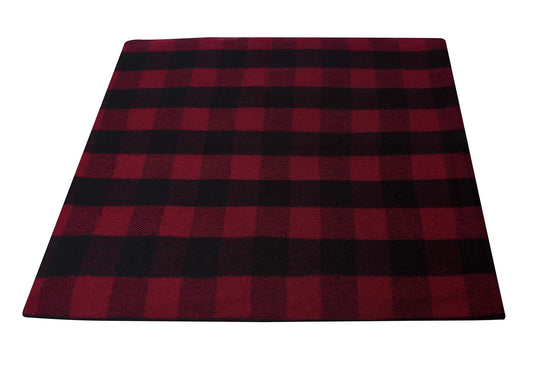Wool Survival Blankets
Why Should I Use a Wool Blanket?
Just the thought of wool blankets is enough to make anyone think of hot cocoa, cozy winter nights, and warm fireplaces. There’s a reason why: when it comes to keeping warm, wool is far superior to any other material available.
Wool is made mainly of proteins, while cotton is a plant-based material composed primarily of cellulose. As such, the fiber’s natural composition gives any wool blanket a different feeling—as well as multiple benefits. Wool blankets vary in their percentage of wool, but the higher the wool content, the warmer and naturally flame-resistant they are.
Essentially, you don't want to go out into the great outdoors without a soft wool blanket to protect you from the elements.
Below, we’ll cover the frequently asked questions about wool Blankets, including:
What types of wool blankets can I buy?
Do wool blankets help with sleep?
Are wool blankets flame resistant?
Are wool blankets good for the environment?
What Types of Wool Blankets Can I Buy?
There are a few types of wool blankets that you can buy, depending on your goals and budget.
- Merino wool, or alpaca wool, blankets are made of a famous wool produced by Merino sheep wool or Alpaca wool.
- A military wool blanket can be 100% wool or a synthetic blend with cotton or other materials.
Without a doubt, a merino wool blanket is known for its high quality and you’re likely to find it the softest blanket you’ve ever had. If you're looking to take advantage of all the benefits of wool, stick with natural fiber blankets, such as those made of finer wool from merino sheep.
Merino wool blankets, like the 100% Wool Queen Blanket, are not itchy or scratchy. Instead, they are soft to the touch and give you the feeling of being wrapped in a cloud. Look for blankets with a high thread-count because they provide better insulation to keep you warm in any environment.
Alternatively, military blankets come in a variety of sizes. One of the most popular sizes is a twin-size wool blanket, which is perfect for the outdoors as an old army blanket.
They are great for keeping warm in a bunkhouse or sleeping bag, but you have to choose one with a percentage of wool content, such as a 70% wool blanket, rather than synthetic fibers.
Are Wool Blankets Waterproof?
A wool blanket is an absolute must if you anticipate being out in wet weather. You’ll find that these blankets wick moisture, repelling it from the outside and absorbing it from the inside. So if the weather is particularly cold and wet, your wool blanket will protect you from the increased moisture. If you are prone to sweating during the night, the blanket will also absorb it, allowing you to stay dry and comfortable.
Interestingly enough, wool is also excellent at keeping you cool in the summer heat. Its moisture wicking and absorption properties regulate your body’s temperature, making it bearable to sleep even in the sweltering heat.
You can choose to sleep under or over a wool blanket, and it will retain its moisture-wicking properties. These properties also make it less likely to support dust mites, bacterial growth, or fungus spores around the house because the blanket absorbs excess humidity.
The exterior of your blanket has a wax coating and overlapping scales that allow it to repel moisture. The interior of your blanket is made of wool fibers that absorb moisture and manage air and water flow, so humidity can slowly evaporate into the air.
So, wool blankets have high thermal efficiency and are great for any situation, especially camping out in cold weather.
Are Wool Blankets Warm?
Wool blankets are highly insulating, especially when made with finer wools and natural fibers. They keep you warm inside your bedding without releasing your body heat outside the blanket into the cold winter air. A 100% or 90% Wool Blanket works great for keeping yourself warm in any situation.
If you wanted to get the same or similar level of insulation from a cotton blanket or other natural fibers, you would need a much thicker and heavier blanket, which could be uncomfortable to sleep with. Wool blankets are naturally warm without the additional bulk weighing you down.
Do Wool Blankets Help with Sleep?
Because of their moisture-wicking properties and insulation, wool blankets are not only suitable for sleeping, but also improve your overall sleep quality.
Wool is breathable and regulates your body temperature. Because they absorb sweat and keep you warm, they are known to have temperature regulation features. The consistency in temperature helps lower your heart rate and reduce the times you wake up in your sleep. You’ll find that having a wool blanket increases the duration of your REM and deep sleep, which are vital for getting a good night's rest.
Wool is perfect for people with health conditions and those suffering from night sweats. People suffering from fibromyalgia, arthritis, or bedsores find wool reduces some discomforts. Also, because wool absorbs moisture, people who suffer from night sweats find that it dramatically improves their sleep quality.
Finally, wool doesn’t retain static electricity, making it perfect for dry, wintery months, when lower humidity levels cause electric shocks.
Are Wool Blankets Flame Resistant?
Wool blankets are naturally flame retardant, meaning they have a high chance of resisting fire. On the off-chance that wool catches fire, it burns out but does not spread flames. That's why trains and airplanes use wool carpeting, and firefighters have wool uniforms.
Other materials, especially synthetic ones such as polyester or cotton blankets, burn very quickly, spread the fire, and release toxic fumes.
Wool also has unique antibacterial properties because it wicks away moisture, stopping fungus, mildew, or bacteria from growing in it. That's why many people opt to buy wool mattress toppers.
Are Wool Blankets Good for the Environment?
Because it is a naturally occurring material derived from sheep, wool is naturally biodegradable and a renewable resource. Shearing sheep for their wool is a healthy practice and does not harm the environment or its source.
Are Wool Blankets Good for Camping?
Wool blankets are great for keeping you warm during camping. If you’re camping in the cold, for example, plan to have a wool blanket on top of your other camping equipment — and be sure to layer your clothing.
You should have a layer of silk sheet, a wool blanket, and a protective shell in your wool bedding, such as a oilskin tarp or gum blanket. You can also have a few layers of clothing and then cover yourself with a wool blanket.
Unless you have wool allergies, be sure to bring at least one wool blanket on your camping trip. And, don’t just bring army blankets — bring a larger blanket as well for added comfort.
How To Wash a Wool Blanket?
Wool material rarely needs to be washed. To properly care for a wool blanket, simply air it out for a few hours. A good breeze will blow away any dust that has accumulated. Once in a while, a good wash is absolutely fine, especially if you have spilled something on the blanket or used it heavily during camping trips.
In fact, wool blankets benefit from a quick hand-washing in cold water. Some can even be washed in the washing machine using a wool setting, but make sure to first carefully read the care instructions to avoid damage or shrinkage. Use towels to absorb excess water when the blanket is out of the machine or after you have hand-washed it.
Try to air-dry your blanket away from the sun and lay it flat, if possible, so the fibers retain their original shape.

